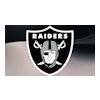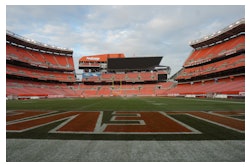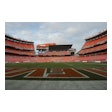Copyright 2018 The Deseret News Publishing Co.
Deseret Morning News (Salt Lake City)
The University of Utah revealed plans Wednesday to expand Rice-Eccles Stadium from its current stadium capacity of 45,807 to 51,444 with a renovation of the south end zone that will include premium seating.
How does Rice-Eccles Stadium stack up against the rest of the Pac-12, before its renovations? Here's a look at each stadium in the Pac-12, its key features and the latest renovations.
Stadiums are listed in order of their current seating capacity, from largest to smallest.
Rose Bowl, UCLA
Seating capacity: 88,565
Most recent stadium update: The Rose Bowl underwent a three-phase, $152 million renovation project, completed in 2013, that included a new video board measuring 78-by-30 feet, increasing the number of concession areas by 50 percent, restoring the field hedges on the sidelines and a renovation of the press box, among other improvements, including increased safety provisions.
Other key features: The home of the nation's longest-running and most recognizable bowl game includes a Court of Champions on the south end of the stadium. This highlights Rose Bowl game records, as well as the name of coaches and game MVPs, displayed on plaques attached to the exterior wall. There is also a Hall of Fame statue in the Court of Champions. In addition to the annual Rose Bowl game, the stadium has played host to four BCS national championships, two College Football Playoff semifinals, five Super Bowls, men's and women's World Cup soccer games and events for both the 1932 and 1984 Summer Olympics.
Los Angeles Memorial Coliseum, USC
Seating capacity: 78,467 (will be 77,500 in 2019 following its current renovation)
Most recent stadium update: The Coliseum is currently undergoing construction to renovate the historic stadium - its capacity was 92,348 pre-construction. The $300 million renovations will include a new structure on the south side, complete with suites, loge boxes, club level and a new press box, along with a new concourse. Every seat will be replaced - the seating capacity will be reduced to 77,500 at its completion - and two video boards will be added, while WiFi will be upgraded. It's expected to be completed in time for the 2019 home-opener.
Other key features: The historic stadium has an Olympic Cauldron, which was built for the two Summer Olympics it hosted (in 1932 and 1984). It will also host the 2028 Olympics. Its cauldron is part of a Peristyle entrance that honors the rich heritage of USC football. The stadium has also been the home of a number of NFL teams, including the Rams through the end of the 2019 season, and hosted two Super Bowls.
Husky Stadium, Washington
Seating capacity: 70,138
Most recent stadium update: A three-year, $261 million renovation brought new football offices and a new press box, as well as a grand concourse. In addition, the video and audio system was upgraded, and the track around the football field was removed. Open-air field-level suites were also added, replacing the temporary bleachers in the east end zone. Concession stands and bathrooms were also upgraded, and the student section moved from the north sideline to the west end zone.
Other key features: The stadium overlooks Lake Washington and the Cascade Mountains, providing a unique and picturesque view. It has also undergone renovations in 1987 and 1950 since the stadium was built in 1920.
Memorial Stadium, Cal
Seating capacity: 62,467
Most recent stadium update: The stadium underwent a $321 million, 21-month renovation beginning in December 2010 to make it a seismically safe environment. The west side of the stadium was most impacted - about 60 percent of the stadium was renovated - and the renovation included greater access like wider concourses, updated restrooms, restoration of the stadium's historic facade, a modern press box and three club levels.
Other key features: A dense forest of pine trees lines the east side of the stadium, with a view of the San Francisco Bay Area to the west. The stadium was modeled after the Colosseum in Rome.
Autzen Stadium, Oregon
Seating capacity: 54,000
Most recent stadium update: The east end zone scoreboard received an update, including a digital screen, in 2014. The sideline wall graphics were also updated, as was the sound system, and a section for food trucks became available on the north side of the stadium.
Other key features: A $90 million renovation prior to the 2002 season added 12,000 seats and 32 luxury boxes on the stadium's south side, as well as the Club at Autzen, a 10,000-square-foot entertainment center. There are luxury suites on both the north and south sides as well. A 33-by-83-foot high-definition LED scoreboard was added in 2008.
Arizona Stadium, Arizona
Seating capacity: 53,646
Most recent stadium update: In 2013, the Lowell-Stevens Football Facility on the north end of the stadium, which added 60 four-person loges, 300 additional club seats, the upscale Sands Club and houses the football offices as well as the Arizona locker room.
Other key features: The scoreboard in the south end zone was installed in 1999 and updated since, while there have been sound system updates twice in the past decade. The Ring of Fame along the west side of the stadium honors names of previous Wildcat greats. The four-story skybox features 319 loge seats on the first level, 13 suites on the second level and a President's Box and 10 suites on the third level, with the media center on the fourth floor.
Sun Devil Stadium,
Arizona State
Seating capacity: 53,599
Most recent stadium update: The Student-Athlete Facility was completed in 2017, bringing with it a state-of-the-art weight room, new locker room with a barbershop and a player's lounge with TVs and several gaming options. There is also new club-level seating and a 113-by-48 video board in the north end zone, the eighth- largest nationally. The capacity of the stadium was 65,870 before the renovations and now seats 53,599, according to the Arizona Republic.
Other key features: The Carson Student Athlete Center in the south end of the stadium houses all 21 varsity sports at Arizona State. The stadium also features a three-story, 60,000-square-foot press box and skybox, with two levels of suites (30 on each level) and topped by the press box and eight additional suites on the top level.
Stanford Stadium,
Stanford
Seating capacity: 50,424
Most recent stadium update: While Stanford Stadium upgraded its scoreboards with high-definition video boards in 2013, the real significant event came in 2005 when the school's board approved demolishing the original stadium and reconstructing it in time for the 2006 season. The seating capacity was reduced from 85,000 to a little over 50,000. The new facility removed the track along the outside of the football field, and was a dual-deck concrete stadium in comparison to the nearly enclosed bowl that the structure had originally been.
Other key features: Whether the old Stanford Stadium or the new, the facility has been home to several historic event. Stanford hosted the Pac-12 championship game at the stadium in 2012, beating UCLA 27-24, before it moved to a neutral site in 2014. Also, Stanford Stadium was the site of the Super Bowl in 1985 and hosted men's and women's World Cup soccer games in the 1990s.
Folsom Field, Colorado
Seating capacity: 50,183
Most recent stadium update: The Champions Center and Indoor Practice Facility were completed in 2016, adding a Touchdown Club room and Touchdown Club seats and loge boxes in the north bleachers and the Champions Club in the northeast corner of the end zone. A Rooftop Terrace also allows fans to take in scenic views of the Rocky Mountain foothills.
Other key features: A $42 million renovation project on the east side increased the stadium to its current capacity. The field was natural grass until 1971, when it was replaced by AstroTurf. Of note, Saturday's contest between Utah and Colorado will be the 500th game at Folsom Field.
Rice-Eccles Stadium, Utah
Seating capacity: 45,807
Most recent stadium update: The Utes unveiled a new video board and sound system in 2016. The video board is 122 feet wide by 64 feet tall and contains 2.6 million pixels while costing $13.5 million.
Other key features: The playing field is a FieldTurf surface, with the latest version of this surface installed at Rice-Eccles in September 2015. The stadium played host to the opening and closing ceremonies for the 2002 Winter Olympic Games. The Utes replaced their aging Rice Stadium in the mid-1990s, nearly tearing down the entire stadium in 1997 and rebuilding a concrete, steel and glass structure in time for the 1998 season. The only part that remained from the original stadium was the south end zone bleachers. Construction costs totaled $50 million.
Reser Stadium,
Oregon State
Seating capacity: 43,154
Most recent stadium update: A ribbon board was added in 2018 to the facade on the east side and runs the length of the stadium. Also, a 13,000-square-foot area known as The Terrace was opened in the north end zone and provides fans with upgraded food options and a reserved plush chair-back seat.
Other key features: The Valley Football Center, opened in 1990 and most recently expanded in 2017, is nearly 100,000 square feet in the north end of the stadium and houses the football offices, an upgraded players lounge and the OSU Athletics Hall of Fame while also allowing fans a chance to watch the game from the north end zone during games.
Martin Stadium, Washington State
Seating capacity: 32,952
Most recent stadium update: A $61 million project brought a football operations building to the stadium and was completed in summer 2014. The facility operates as a home to the football team, including football offices, locker room, weight room and a recruiting room.
Other key features: The school approved an $80 million project in 2011 to add premium suites and club seats to the stadium. A new video board was also installed and ready for the 2014 season.
EMAIL: [email protected]
TWITTER: brandonljudd
Read More of Today's AB Headlines
Subscribe to Our Daily E-Newsletter
Terms and Conditions Privacy Policy































